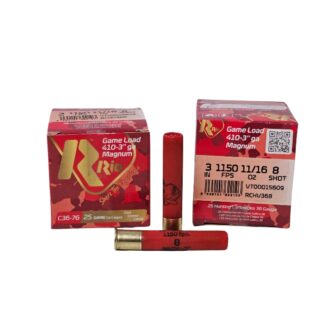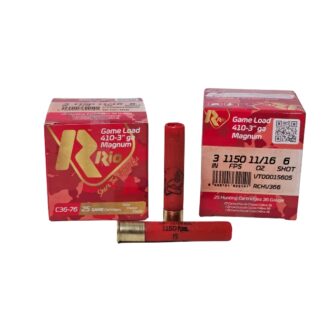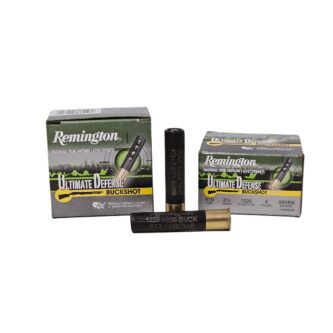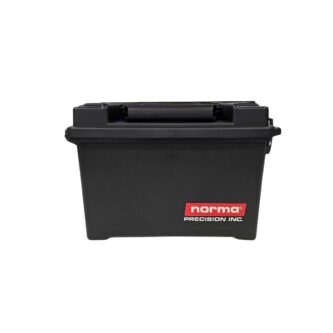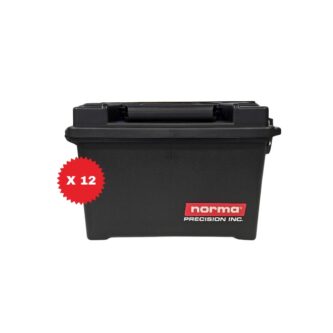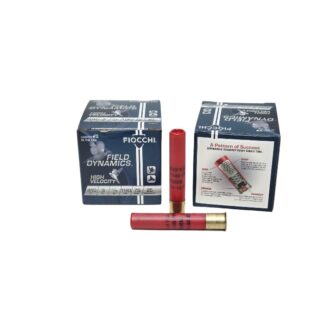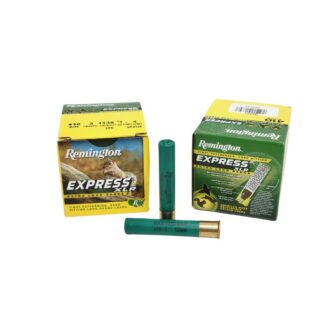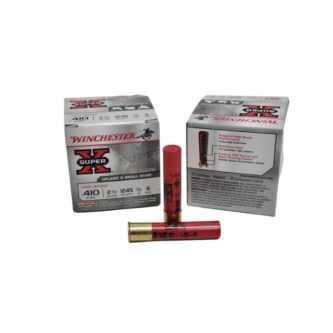The .410 shotgun, often overshadowed by its larger counterparts, holds a unique and esteemed position in the world of firearms. Known for its slender profile and minimal recoil, the .410 has carved out a niche that appeals to a diverse group of shooting enthusiasts. Its popularity spans from young beginners taking their first shot, to seasoned hunters seeking a challenging small game experience, and even to those in need of a lightweight, manageable home defense solution.
Renowned for its versatility, the .410 shotgun can be employed in various scenarios – from sport shooting and hunting to self-defense. This versatility, coupled with its distinct characteristics, has sparked a wide range of questions about its capabilities, limitations, and suitable applications. In this article, we aim to shed light on the most frequently asked questions surrounding the .410 shotgun. From inquiries about ammunition availability and pricing to technical specifications and optimal use cases, we’ll delve into the details to provide you with comprehensive insights into this fascinating and often underestimated firearm. Whether you’re a curious newcomer or a seasoned .410 user, this article seeks to enhance your understanding and appreciation of the .410 shotgun, a truly unique tool in the world of shooting sports.
Shop .410 Bore at KIRAmmmo.com
Why Can’t I Find .410 Ammo?

One of the most common inquiries about the .410 shotgun pertains to its ammunition – specifically, the challenges in finding it and the reasons behind its often higher cost compared to other shotgun shells. Understanding these aspects is crucial for both prospective and current owners of .410 shotguns. Luckily, we have consistently had .410 Bore Ammo in stock over the past few years. That doesn’t mean we will always have it in stock, but so far we’ve been able to work with the manufacturers to make sure our warehouse is full. However, below are some of the reasons as to why it has been difficult to find in other stores.
Challenges in Finding .410 Ammo:
- Limited Production: The .410 bore, while popular among a dedicated group of enthusiasts, doesn’t have the same widespread demand as more common gauges like the 12 or 20. This lesser demand can lead to less frequent production runs and, consequently, sporadic availability in some markets.
- Specialized Nature: The .410’s unique size and characteristics mean that it requires specialized production equipment and processes, which not all ammunition manufacturers are equipped to handle. This specialization can limit the number of companies producing .410 ammo.
- Seasonal Demand: There are often seasonal fluctuations in the demand for .410 ammunition, particularly around hunting seasons, which can lead to temporary shortages as suppliers struggle to keep up with the increased demand.
Why are .410 Shells so Expensive? (Reasons Behind Higher Costs):
At KIR Ammo, we offer our ammo to the public at the best price we can. As always, many factors are in play when it comes to pricing on ammo. We’ve covered this extensively in our article on the evolving price of ammunition.
- Production Complexity: Despite its smaller size, the .410 shell can be more complex and costly to produce. The precision required in manufacturing these smaller shells often leads to higher production costs.
- Economies of Scale: Larger gauges benefit from economies of scale in production. The less frequent production and lower volume of .410 shells don’t allow for these cost savings, resulting in higher prices for the end consumer.
- Specialized Equipment: The need for specialized equipment to produce and load .410 shells also contributes to the higher cost. Manufacturers must invest in specific machinery and processes, the costs of which are often reflected in the retail price.
Current Price Range for .410 Shotgun Shells:
- Varied Pricing: The price of .410 shells can vary widely depending on the type (birdshot, buckshot, slugs), brand, and place of purchase. Generally, the cost per shell is higher than that of more common shotgun gauges.
- Market Trends: As of the current market, prices can range from moderate to premium, depending on the quality and specific application of the ammunition. Specialty and high-performance .410 shells, such as those designed for self-defense, will typically be at the higher end of the price spectrum.
While the .410 shotgun offers unique advantages and experiences to its users, these come with the considerations of ammo availability and cost. Understanding these factors helps shooters make informed decisions about incorporating the .410 into their shooting practices and budgeting for its ammunition.
What is a .410 Equivalent to? (Comparative Analysis)
When assessing the capabilities of the .410 shotgun, a comparative analysis helps in understanding its place in terms of performance and effectiveness, particularly in self-defense scenarios. This analysis is crucial for making informed decisions about utilizing the .410 for specific needs.
Performance Equivalent of .410 Ammunition:
- Compared to Other Gauges: In terms of shot payload and energy, the .410 is often compared to the larger 28 gauge, though it still has a smaller shot volume and lower energy. The .410’s performance is significantly below that of more common 20 and 12 gauges, which carry more shot and deliver greater energy on target.
- Effective Range: The .410’s effective range is shorter than larger shotguns. It excels in close-range scenarios, particularly within 25 to 30 yards, which is suitable for small game hunting and clay shooting.
Self-Defense Capabilities:
- Stopping Power: The .410, especially when loaded with buckshot or defensive slugs, can be effective in stopping an intruder at close ranges. However, its stopping power is generally less than that of larger gauges, due to the smaller payload and lower velocity.
- Ammo Selection: The effectiveness of a .410 for self-defense significantly depends on the choice of ammunition. Self-defense specific loads, which often contain larger-sized pellets or slugs, offer enhanced stopping power compared to standard birdshot loads.
- Consideration of Range: For self-defense within the confines of a home, where engagement distances are typically short, the .410 can be a practical choice. Its manageable recoil and lighter weight allow for quicker handling and follow-up shots.
Analysis:
- Pros: The .410’s low recoil, ease of handling, and less risk of over-penetration in close quarters make it a viable option for home defense, especially for shooters uncomfortable with the recoil of larger gauges.
- Cons: The lower power and limited range of the .410, compared to larger shotguns, must be considered. In a self-defense situation, these factors can influence the outcome, and users must be aware of these limitations.
- Training and Familiarity: Regardless of gauge, proficiency and familiarity with the firearm are critical. Users of the .410 for self-defense should train specifically with their chosen ammo to understand its capabilities and limitations.
While the .410 shotgun may not be the first choice for self-defense due to its lower stopping power compared to larger gauges, it can be effective in certain scenarios. Its suitability largely depends on the specific situation, ammunition type, and the shooter’s comfort and proficiency with the firearm.

Ammo Compatibility and Use:
A common query among .410 shotgun owners revolves around the compatibility of different ammunition types, particularly the feasibility of using 45 caliber shells in a .410 shotgun. For example, Can you shoot 45 shells in a 410 shotgun? What caliber is interchangeable with 410? Understanding this aspect is crucial for safe and effective use of the firearm.
Using 45 Caliber Shells in a .410 Shotgun:
- Compatibility: It is important to note that not all .410 shotguns are designed to safely fire 45 caliber cartridges. The capability to shoot 45 caliber shells, such as the .45 Colt, is specific to certain firearms that are built to accommodate both types of ammunition. These are typically known as ‘circuit judge’ or ‘governor’ models.
- Safety Considerations: Using ammunition not specifically designed for your firearm can be extremely dangerous. It is imperative to consult the manufacturer’s guidelines or a firearms expert before attempting to use any ammunition not explicitly intended for your shotgun.
Interchangeable Calibers with the .410:
- Specific Firearms: There are certain firearms on the market designed to chamber both .410 shotshells and .45 Colt cartridges. These dual-caliber firearms offer versatility for owners looking for a gun that can serve multiple purposes.
- Rifling and Barrel Design: Firearms capable of shooting both .410 and .45 Colt typically have barrels with rifling, which stabilizes the bullet in flight. This is a departure from traditional smoothbore .410 shotguns, which are optimized for firing shot pellets.
- Ammunition Specifics: When using a dual-caliber firearm, it’s crucial to use ammunition that matches the specific caliber and load the gun is rated for. This ensures both the safety and optimal performance of the firearm.
While certain specialized firearms are designed to shoot both .410 shotshells and .45 caliber cartridges like the Taurus Judge, standard .410 shotguns are not compatible with .45 caliber ammunition. Always adhere to the manufacturer’s specifications and guidelines for ammunition use to ensure safety and proper functioning of your firearm. The versatility of dual-caliber firearms can be an attractive feature, but it requires a clear understanding of the capabilities and limitations of your specific gun.
Ammunition Types and Choices
The types of ammunition available for .410 shotguns are diverse, catering to various shooting activities, including hunting, target practice, and even self-defense. Understanding the availability and effectiveness of these different ammunition types, such as steel shot and slugs, is crucial for users to make informed choices for their specific needs. Some of the most commonly asked questions about .410 ammo types and choices are:
Can you get steel shot for a 410?
How far can you shoot a 410?
Are there slugs for a 410?
Can you shoot a slug through a 410?
Availability of Steel Shot for .410 Shotguns:
- Environmental Concerns: With increasing environmental awareness and regulations, steel shot has become a popular alternative to traditional lead shot, particularly for waterfowl hunting where lead contamination is a concern.
- .410 Options: The availability of steel shot in .410 bore is good, with several manufacturers offering steel shot loads. These are typically available in sizes suitable for hunting small to medium-sized birds.
- Performance Considerations: While steel shot is less dense than lead, thereby offering less energy downrange, modern steel loads are designed to provide adequate performance for hunting, especially within the optimal range of the .410.
Range and Effectiveness:
- Effective Range: The effective range of a .410 shotgun when shooting birdshot is generally up to 25-30 yards, ideal for small game and bird hunting. This range ensures sufficient shot density for a clean and ethical kill.
- Factors Affecting Range: The effective range can vary based on the specific load, the barrel length of the shotgun, and the presence of chokes. It’s important for shooters to understand these factors and how they affect the performance of their .410 shotgun.
Use of Slugs in .410 Shotguns:
- Slug Options: Slugs are available for .410 shotguns and provide a single-projectile option, significantly different from the spread of birdshot or buckshot. They are useful for larger game and self-defense situations.
- Range and Effectiveness: The range of a .410 slug is generally greater than that of birdshot, extending its effective use to around 50-75 yards. However, the relatively small size of the .410 slug means that it carries less energy than slugs from larger gauges.
- Choosing the Right Slug: When selecting slugs for a .410, it’s important to consider the intended use. For hunting, a slug that offers adequate penetration and expansion is desirable. For self-defense, a slug that balances penetration with the risk of over-penetration should be considered.
The .410 shotgun offers a variety of ammunition types, including steel shot for environmentally sensitive areas and slugs for situations requiring a single, powerful projectile. Understanding the range, effectiveness, and intended use of these different types of ammunition can help shooters maximize the potential of their .410 shotguns in a variety of scenarios. The .410 is a versatile weapon and a great choice for camping and survival situations.
Technical Specifications
Diving into the technical specifications of the .410 shotgun shells provides valuable insights into their design and capabilities. Understanding these specifics, from the amount of shot in a shell to the longevity of the ammunition, is crucial for users to effectively and safely utilize their .410 shotguns. Some common questions covered in this section are:
How much shot is in a 3 inch 410 shell?
What is the smallest shotgun gauge?
How long do 410 shotgun shells last?
Shot Quantity in a 3-Inch .410 Shell:
- Amount of Shot: The 3-inch .410 shotgun shell typically contains more shot compared to the 2.5-inch variant. The exact amount of shot can vary based on the shot size and manufacturer, but generally, a 3-inch shell can hold approximately 11/16 to 3/4 ounces of shot.
- Implications: This increased load offers a denser shot pattern and slightly more power, making the 3-inch shell a preferred choice for hunters seeking enhanced performance without stepping up to a larger gauge.
Smallest Shotgun Gauge Available:
- The .410 Gauge: The .410 is often considered the smallest commercially available shotgun gauge, with its bore diameter measuring approximately 10.4 mm or 0.410 inches. It’s important to note that the .410 is technically a caliber, not a gauge, as its name represents its bore diameter.
- Comparison to Other Gauges: While there are other rare and specialized small-bore shotguns, such as the 9mm Flobert, they are not as commonly available or widely used as the .410. The .410 remains the standard for small-bore shotguns in terms of availability and practical use.
Shelf Life and Longevity of .410 Shotgun Shells:
- General Shelf Life: Like other ammunition, the shelf life of .410 shotgun shells depends on storage conditions. When stored properly in a cool, dry environment, .410 shells can remain functional for several decades.
- Factors Affecting Longevity: Ammunition longevity can be affected by factors such as humidity, temperature fluctuations, and exposure to corrosive elements. Proper storage in ammo cans or cabinets with moisture control can significantly extend the shelf life of the shells.
- Inspection Before Use: Regardless of the storage duration, it’s always advisable to inspect ammunition for any signs of corrosion, damage, or deterioration before use. This ensures both safety and reliability when firing.
The technical specifications of the .410 shotgun shells, from the shot quantity in 3-inch shells to their overall shelf life, highlight the importance of understanding the ammunition’s characteristics. This knowledge ensures that shooters can make the best use of their .410 shotguns, whether for hunting, sport, or self-defense, while maintaining safety and reliability.
These insights underscore the .410’s unique position in the world of shotgunning – as a versatile, adaptable, and user-friendly option suitable for a wide range of activities, from hunting and sport shooting to self-defense.
.410 Shells on Sale
Key Insights:
- The .410’s ammunition, including the 3-inch shells, offers a balance between payload and manageability, making it suitable for small game hunting and beginner shooters.
- Despite misconceptions, the .410 can be effective in self-defense situations, particularly with the right ammunition and within its effective range.
- Its technical specifications, such as the amount of shot in various shell sizes and the longevity of the ammunition, highlight the importance of understanding and choosing the right ammo for your needs.
Encouragement to Explore Further:
-
- The .410 shotgun, with its unique characteristics, is more than just a tool for hunting or a stepping stone for new shooters. Its capabilities extend to providing a challenging and enjoyable experience for seasoned shooters as well.
- We encourage you to consider the .410 shotgun for your specific needs, whether you’re looking for a lightweight hunting option, a beginner-friendly shooting experience, or a compact self-defense firearm.
The .410 shotgun, often underrated, is a remarkable firearm that offers versatility and enjoyment across a spectrum of shooting disciplines. Explore our range of .410 shotguns and ammunition. Whether you’re a first-time buyer or looking to add to your collection, we offer a selection that caters to various preferences and needs. Its subtleties and nuances make it a fascinating subject for discussion and exploration. We hope this FAQ has shed light on its capabilities and inspired you to discover more about what the .410 can offer.
Finally, make sure you pick up your .410 ammo at KIRAmmo.com. We offer fast order processing and ammo shipping, 5-star customer service, and a wide variety of ammunition from the top brands in the industry. We also carry a full line of other shotgun shells in 12 gauge, 20 gauge, and more!
